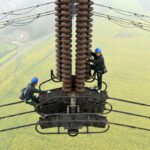How many rumors do you know about wires and cables?
The rapid development of the Internet age has not only brought convenience to everyone’s life, but also brought new challenges to our social management. In particular, we have seen the rapid spread of rumors. I believe you can distinguish many rumors, but how many rumors about wires and AAAC Cables have you heard? Can you … Read more

